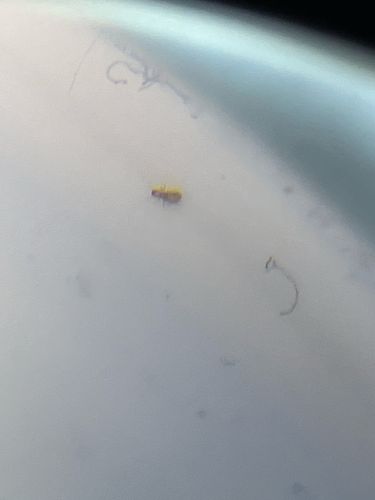Thrips
Scientific Name: Order Thysanoptera (specific species not identifiable from image)
Order & Family: Order: Thysanoptera, Family: Various (e.g., Thripidae, Phlaeothripidae)
Size: Typically 0.5 to 5.0 mm long

Natural Habitat
Widely diverse, found on a variety of plants (leaves, flowers, fruits), in soil, under bark, or in leaf litter. Many are agricultural pests in greenhouses and field crops.
Diet & Feeding
Most thrips are phytophagous (plant-feeding), using their rasping-sucking mouthparts to feed on plant cells, pollen grains, or fungal spores. Some species are predatory on other small arthropods or mites.
Behavior Patterns
Thrips are generally small and elusive. They often hide in tight spaces, such as in flower buds or under leaves. They can reproduce rapidly, often parthenogenetically. Some species aggregate. Their life cycle typically involves egg, two larval instars, prepupa, pupa, and adult stages.
Risks & Benefits
Risks: Many species are significant agricultural pests, causing damage to crops by feeding on plant tissues, leading to discoloration, distortion, and scarring. They can also transmit plant viruses. Benefits: Some predatory thrips species can be beneficial in controlling pest populations (e.g., mites, whiteflies). They also contribute to pollination in some flowers.
Identified on: 9/17/2025